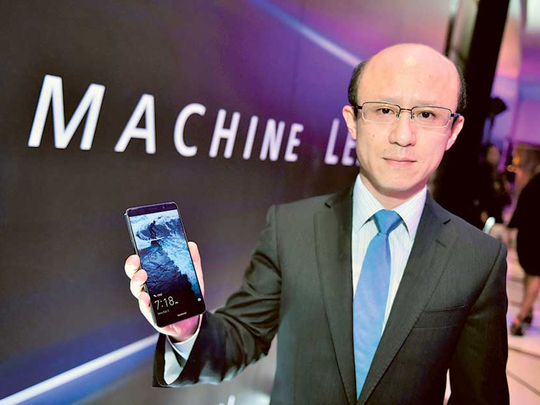
Dubai: Huawei has a good chance of touching its 2016 sales target of 140 million due to the seasonal aspect of the handset market and the challenges Samsung faced this quarter, an industry expert has said.
To make this happen, Daniel Gleeson, senior analyst, consumer technology at Ovum, told Gulf News that Huawei needs to grow its shipments by 40 per cent in the quarter.
According to its official Weibo account, Huawei has shipped more than 100 million units as of October this year. To achieve the sales target, Huawei needs to sell around 40 million units in the next two months.
The third-ranked smartphone manufacturer shipped 108 million units globally in 2015.
To achieve its sales target, the Chinese vendor on Monday launched the last flagship smartphone of the year — the Mate 9 — with a bigger screen, bigger battery, as well as new and improved camera technology and a machine-learning algorithm.
Huawei claims that machine-learning algorithm will deliver a fast and smooth experience as experienced on day one even after 18 months of continuous usage.
The 5.9-inch full HD device is powered by home-grown octa-core 2.4GHz Huawei 960 Kirin chipset, coupled with 4GB of RAM and 64GB of storage capacity. The microSD card supports up to 256GB.
It houses dual Leica lens in the rear (12MP colour and 20MP monochrome) and an 8MP front-facing camera. It is priced at Dh2,299.
Gene Jiao, president of the Huawei Consumer Business Group in the Middle East and Africa, told Gulf News that the company has increased its market share and sales volume tremendously in the region.
“Our mid- and high-end handsets [the Mate and P series] have registered strong growth over [the] last year, with average selling prices going higher when compared to last year. Numbers are part of the game. We have built a solid foundation in 2015 as a brand in the region and it is a strategic year for us to be in the leading position,” he said.
According to research firm Strategy Analytics, Huawei has displaced Samsung to become the second-most profitable smartphone supplier for the third quarter, followed by two other Chinese brands Vivo and Oppo. Apple remains the most profitable mobile phone brand.
Jiao said that the absence of the Note 7 was a very good opportunity for Huawei to serve customers in a better way and increase its market share.
With the Mate 9, Gleeson said that Huawei clearly wants to capitalise on the gap in the market created by the Note 7 recall, and it may well benefit to some extent.
However, it is more likely that Apple will be the main beneficiary of the Note 7 recall.
He added that Huawei will get closer to second-ranked Apple, but that is mainly due to Apple not growing its iPhone sales.
Apple and Huawei fundamentally compete in different price brackets, so the growth of one should not have a direct impact on the other.
“While Huawei has invested a lot in its brand over the last few years, the very high end of the market is almost exclusively dominated by Apple and Samsung. That will take a long time for Huawei to crack into,” he said.
Ovum said that Huawei may fall short of its sales target at 135 million units this year.
According to Huawei’s CEO Richard Yu, Huawei aims to become the number one smartphone vendor by 2020.












